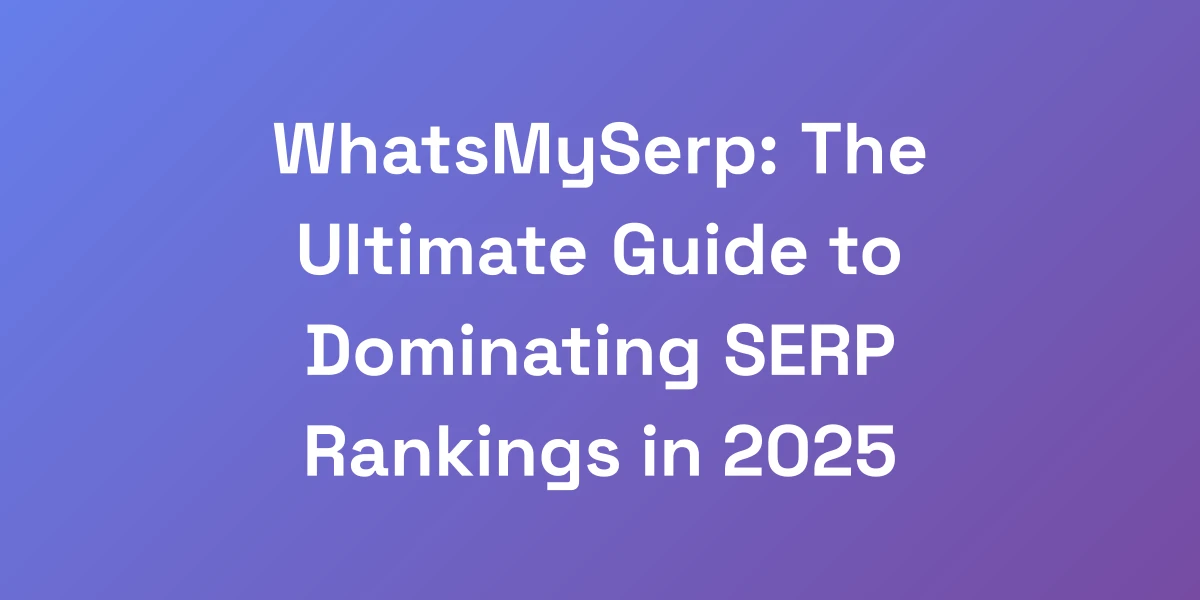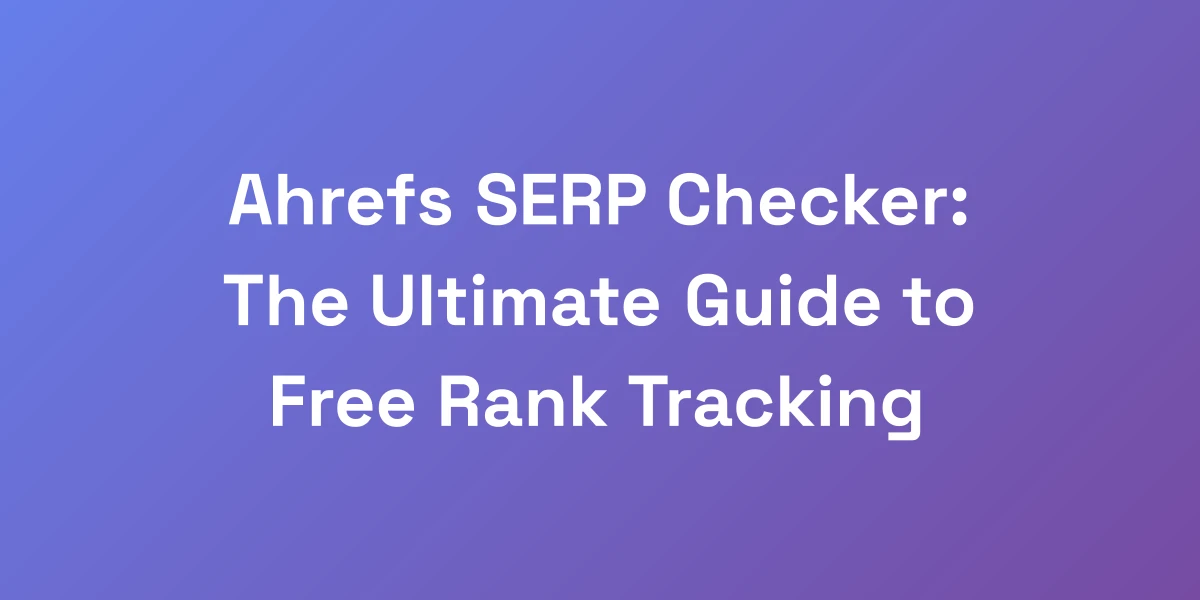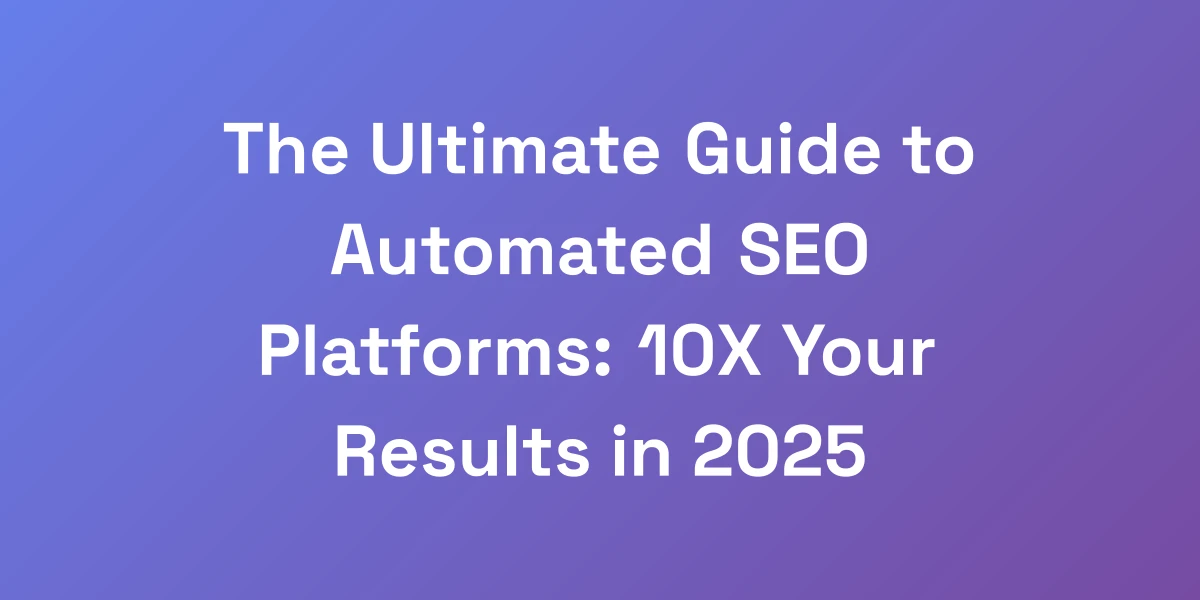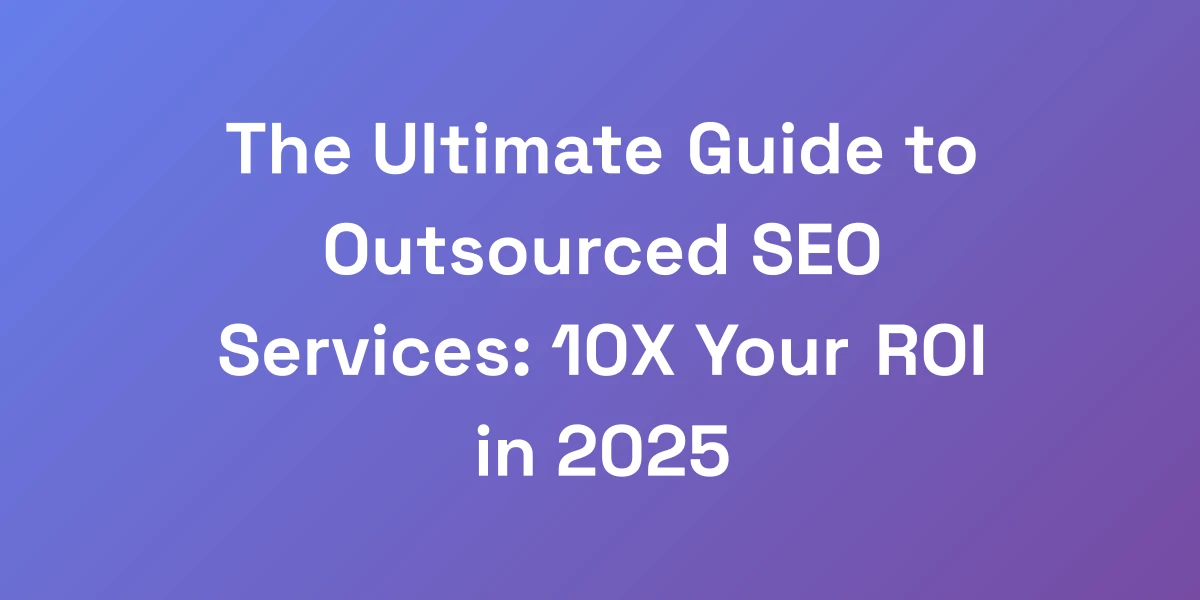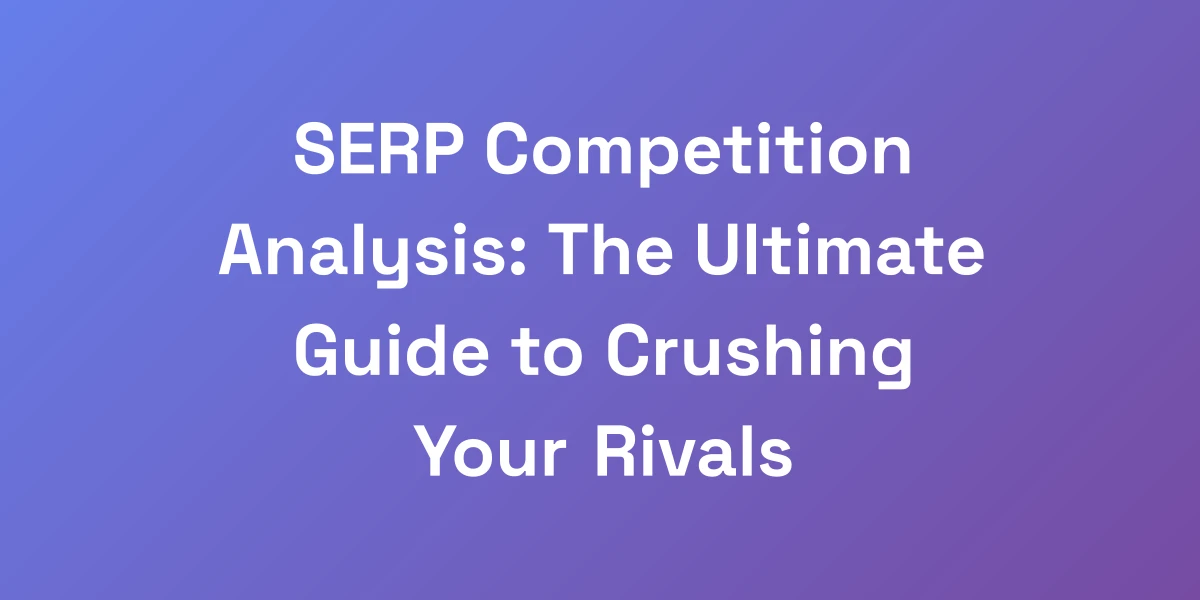
SERP Competition Analysis: The Ultimate Guide to Crushing Your Rivals
Apr 12, 2025 | By [email protected]
Why 90% of Businesses Fail at SERP Competition Analysis
Let us hit you with some truth: Most businesses are hemorrhaging money because they’re flying blind in SERP analysis. Imagine pouring thousands into fancy tools without a grasp of competitive intelligence fundamentals. Feels like setting sail without a compass, right?
Here’s the reality – understanding your SERP competition isn’t just about rankings. It’s about decoding the digital battlefield where millions of dollars in customer attention are won or lost daily. Think of SERP as a fierce war zone where every keyword is a territory fighting for dominance.
We’ve seen companies stumble, unaware that their lack of proper SERP analysis is the hidden dagger in their SEO strategy. Challenges abound: fluctuating algorithms, fierce competitors, and ever-evolving search intents make it a slippery slope.
But don’t worry, we’re here to change that narrative. We’re going to show you exactly how to analyze your competition like a special forces operator, using both free and paid tools that actually move the needle. Ready to transform your approach? Let’s get started.
The Hidden Cost of Poor SERP Analysis
When businesses neglect proper SERP competition analysis, they’re essentially leaving money on the table. Every missed opportunity in understanding your competitors translates to potential revenue slipping through your fingers.
Consider this: if your competitors are optimizing their content for the right keywords and you’re not, you’re losing out on traffic that could convert into sales. It’s not just about losing clicks; it’s about losing market share.
Moreover, poor SERP analysis can lead to inefficient resource allocation. You might be investing in content that doesn’t resonate with your audience or missing out on crucial trends that could skyrocket your visibility.
Imagine spending hours crafting blog posts on topics that don’t align with search intent. It’s like having a high-end product but positioning it in the wrong market. The costs, both financial and reputational, can be staggering.
Common SERP Analysis Mistakes That Kill ROI
- Ignoring Search Intent: Failing to understand what your audience is really searching for leads to irrelevant content that doesn’t engage or convert.
- Overemphasis on Rankings: Chasing the top spot for the sake of it without considering the quality of traffic and conversions can waste valuable resources.
- Lack of Comprehensive Competitor Insights: Not diving deep into your competitors’ strategies means missing out on valuable tactics that could work for you.
- Neglecting Technical SEO: A beautiful, content-rich site won’t perform well if technical issues hinder user experience and search engine crawling.
- Failure to Adapt: SERP dynamics are constantly evolving. Businesses that don’t stay agile and update their strategies accordingly fall behind.
Are you making any of these mistakes? It’s time to reassess and realign your SERP analysis approach to maximize your ROI.
The Three Pillars of Effective Competition Research
Effective SERP competition analysis rests on three foundational pillars: Keyword Insight, Content Quality, and Technical Excellence.
Keyword Insight is all about understanding the keywords your competitors are targeting. It’s not just about volume but also about relevance and intent.
Content Quality involves evaluating the depth, relevance, and engagement level of your competitors’ content. Are they addressing pain points effectively? Are they using multimedia to enhance user experience?
Technical Excellence ensures your website is optimized for speed, mobile-friendliness, and proper indexing. A technically flawless site provides a solid foundation for your content to shine.
By focusing on these pillars, you create a robust framework that supports sustained SEO success.
Quick Win Strategies for Immediate Results
You don’t have to overhaul your entire SEO strategy overnight. Let’s discuss some quick wins that can deliver immediate improvements in your SERP standings.
- Optimize Meta Tags: Ensure your title tags and meta descriptions are compelling and include primary keywords. This can significantly improve your click-through rates.
- Leverage Long-Tail Keywords: Targeting specific long-tail keywords can help you capture niche audiences with less competition, driving highly relevant traffic.
- Enhance Internal Linking: Improve your site’s navigation and distribute link equity by strategically linking related content within your site.
- Update Old Content: Refresh and expand existing content to keep it relevant and valuable, which can boost its performance in SERPs.
- Improve Page Speed: A fast-loading website enhances user experience and can positively impact your search rankings.
Implementing these strategies can give your SERP rankings a quick boost while you work on more comprehensive tactics.
Tools vs. Strategy: What Really Matters
There’s a common misconception that having the right tools is the key to successful SERP competition analysis. While tools are essential, they’re only as good as the strategies behind them.
Think of tools as your arsenal. Without a well-thought-out strategy, even the most advanced tools – such as those outlined in our 15 Best SEO Tools for Agencies in 2025: The Ultimate Tech Stack – won’t yield the desired results. It’s about how you use these tools to gather insights, make informed decisions, and execute effective SEO tactics.
We need to strike a balance. Invest in tools that align with your strategic goals, but never lose sight of the bigger picture. Your strategy should drive your tool usage, ensuring that every piece of data collected is actionable and contributes to your overall goals.
Ultimately, a robust strategy paired with the right tools will set you apart from competitors who rely solely on one or the other.
The Ultimate SERP Competition Analysis Framework
Stop wasting time with surface-level analysis. Here’s the framework we’ve used to help businesses 10x their organic visibility in under 12 months. The key isn’t just about checking rankings – it’s about understanding the battlefield psychology of search results.
Imagine approaching SERP competition like a chess game. Each move is calculated, every strategy is deliberate, and every piece serves a purpose. This framework is our game plan to outmaneuver your competitors and dominate the SERPs.
We’re breaking down competitor SERPs, identifying specific triggers that signal ranking opportunities. This isn’t theory – it’s battle-tested methodology that’s generated millions in revenue.
The 80/20 of SERP Analysis
Focus on the 20% of factors that drive 80% of your results. Identify the key elements that significantly impact your rankings and prioritize them in your analysis.
- Top Competitors: Identify and analyze your top 5 competitors in each target keyword.
- High-Impact Keywords: Focus on keywords that have the highest potential to drive traffic and conversions.
- Content Performance: Analyze which types of content (blogs, videos, infographics) perform best for your competitors.
By honing in on these critical areas, you can streamline your efforts for maximum impact.
Decoding Search Intent Signals
Understanding the intent behind search queries is crucial. Are users looking for information, seeking to make a purchase, or aiming to navigate to a specific site?
Decoding these signals helps you tailor your content to meet user needs effectively. Here’s how:
- Informational Intent: Provide in-depth guides, how-tos, and educational content.
- Transactional Intent: Optimize product pages, include clear calls-to-action, and streamline the purchase process.
- Navigational Intent: Ensure your brand is easily accessible and your website is user-friendly.
Aligning your content with search intent not only improves rankings but also enhances user satisfaction and conversion rates.
Competitive Gap Analysis Framework
Identify the gaps where your competitors are excelling and you are not. This involves a thorough examination of their content, strategies, and SEO practices.
- Content Gaps: Determine which topics your competitors cover that you haven’t, and vice versa.
- Keyword Gaps: Identify keywords your competitors rank for but you don’t, and integrate them into your content strategy.
- Backlink Gaps: Analyze where your competitors are getting their backlinks and seek similar opportunities.
Closing these gaps can provide significant opportunities to improve your SERP rankings and outshine your competitors.
Content Pattern Recognition
Spotting patterns in your competitors’ content strategies can reveal what works and what doesn’t. Look for recurring themes, content formats, and engagement tactics.
- Popular Topics: Identify and replicate high-performing topics with your unique angle.
- Content Structures: Notice if competitors use listicles, in-depth articles, or multimedia elements and adapt your approach accordingly.
- Engagement Strategies: Check how competitors engage their audience—comments, shares, interactive elements—and incorporate similar tactics.
Recognizing these patterns allows you to create content that resonates with your target audience and performs well in SERPs.
Strategic Opportunity Mapping
Create a roadmap of opportunities based on your SERP analysis. Identify areas where you can outperform your competitors and capitalize on their weaknesses.
- High-Opportunity Keywords: Focus on keywords with high search volume but low competition.
- Content Expansion: Develop content that covers gaps in your competitors’ offerings.
- Technical Enhancements: Improve site speed, mobile optimization, and user experience where competitors lag.
Strategic opportunity mapping ensures that you’re always a step ahead, continuously finding new ways to elevate your SERP performance.
Free SERP Analysis Tools That Actually Work
Listen, you don’t need to spend thousands on enterprise tools when you’re starting out. We’re going to show you the exact free tools that will give you 80% of the results for zero dollars.
The secret is knowing how to combine these tools strategically to create a complete competitive intelligence system. We’ve used these exact tools to build and sell multiple 7-figure businesses, and they still work like a charm in 2025.
Essential Chrome Extensions for SERP Analysis
- Keywords Everywhere: This extension shows keyword data directly in your browser, helping you identify high-value keywords on the fly.
- MozBar: Moz’s bar provides instant metrics like Domain Authority and page insights, allowing you to gauge competitor strength quickly.
- SEOquake: A versatile tool that offers on-page SEO analysis, keyword density reports, and backlink information right from the SERP.
These extensions offer a wealth of information at your fingertips, enabling you to conduct thorough SERP analyses without breaking the bank.
Free Tool Stack Implementation
Building a robust SERP analysis system doesn’t require expensive software. Here’s our recommended free tool stack:
- Google Analytics: Track your website’s performance and understand user behavior.
- Google Search Console: Monitor your site’s presence in Google search results and identify any issues that need fixing.
- Ubersuggest: Provides keyword suggestions, traffic estimates, and competitor insights.
- AnswerThePublic: Discover what questions people are asking about your keywords to better align your content.
Combining these tools allows you to gather comprehensive data without spending a dime, giving you a competitive edge in SERP analysis.
Advanced Google Search Operators
Mastering Google search operators can transform how you analyze SERPs. These operators enable you to perform complex searches and uncover hidden insights.
- “site:” Operator: Use this to see all indexed pages of a competitor’s website. For example, “site:competitor.com” shows you their entire indexed presence.
- “intitle:” Operator: Find pages with specific keywords in the title. For example, “intitle:serp competition analysis.”
- “inurl:” Operator: Search for URLs containing specific keywords. For instance, “inurl:blog” will show you all blog pages.
These advanced operators help you dig deeper into your competitors’ content strategies and identify opportunities for your own optimization.
Data Collection Automation
Automating data collection can save you time and ensure you’re always up-to-date with the latest SERP insights. Here’s how to get started:
- Google Sheets with APIs: Integrate APIs from tools like Google Analytics and Ubersuggest to automatically pull in data.
- Web Scraping Tools: Use free tools like ParseHub or Scrapy to gather SERP data and competitor metrics.
- Zapier: Automate data workflows between your preferred tools, ensuring seamless data collection and organization. Explore the benefits of SEO optimization automation to enhance your data collection efforts.
Automation not only streamlines your SERP analysis process but also allows for continuous monitoring and timely adjustments to your strategy.
Result Interpretation Techniques
Collecting data is only half the battle. Interpreting those results accurately is where the real insights lie.
- Trend Analysis: Look for patterns over time in your rankings, traffic, and competitor movements to predict future changes.
- Benchmarking: Compare your performance against top competitors to identify areas where you’re leading or lagging.
- SWOT Analysis: Assess your strengths, weaknesses, opportunities, and threats based on your SERP data to make informed strategic decisions.
Effective interpretation transforms raw data into actionable insights that can drive your SEO strategy forward.
Advanced SERP Competition Metrics That Matter
Forget vanity metrics – these are the numbers that actually predict ranking success. After analyzing thousands of SERPs across multiple niches, we’ve identified the key performance indicators that correlate directly with ranking potential.
Most SEOs focus on the wrong data points, but we’re going to show you exactly which metrics matter and how to use them to make data-driven decisions that drive real business results.
Critical Ranking Factor Analysis
Understanding the core elements that influence your rankings is vital. Focus on these critical factors:
- Backlink Quality: High-quality backlinks from authoritative sites significantly boost your rankings.
- Content Relevance: Ensure your content precisely matches the search intent and provides real value.
- Page Load Speed: Faster websites provide better user experiences, which Google rewards with higher rankings.
- Mobile Optimization: With mobile-first indexing, a mobile-friendly site is non-negotiable for top rankings.
These factors are the backbone of your SEO strategy. Prioritize them to lay a strong foundation for your SERP success.
Competition Strength Indicators
Measuring your competitors’ strength helps you gauge the effort needed to outrank them. Key indicators include:
- Domain Authority (DA):strong> A higher DA means stronger authority and a tougher challenge to surpass.
- Number of Backlinks: More backlinks typically indicate a more established and credible site.
- Content Depth: Comprehensive, well-researched content often performs better in SERPs.
Evaluating these indicators allows you to understand where you stand and what you need to do to compete effectively.
Content Quality Metrics
Content remains king, but not just any content. Focus on these quality metrics:
- Engagement Rates: High engagement indicates that your content resonates with the audience.
- Readability: Content that’s easy to read and understand tends to perform better.
- Originality: Unique, original content is favored by search engines and users alike.
By prioritizing these metrics, you ensure your content not only ranks well but also drives meaningful interactions.
Technical SEO Benchmarks
Technical SEO sets the stage for your content to shine. Keep an eye on these benchmarks:
- Page Speed: Aim for pages that load in under 3 seconds.
- Mobile Responsiveness: Ensure your website is fully optimized for mobile devices.
- Indexability: Make sure all critical pages are indexable by search engines.
Maintaining these technical standards ensures smooth crawling and indexing by search engines, boosting your SERP performance.
User Intent Alignment Scores
Alignment with user intent is a direct pathway to higher rankings. Measure how well your content fulfills the intent behind search queries:
- Relevance: Content should directly address the user’s query.
- Depth: Provide comprehensive information that thoroughly answers the user’s needs.
- Engagement: Encourage user interaction through comments, shares, and other engagement metrics.
By scoring high on intent alignment, your content becomes the go-to resource for users, naturally climbing SERP ranks.
Implementing Your SERP Domination Strategy
This is where rubber meets road. We’re going to give you the exact implementation blueprint we use with our consulting clients who pay us $100k+ per year.
The key is systematic execution and knowing exactly when to push harder vs when to pivot. You’ll learn how to turn SERP analysis into actionable strategies that can be implemented immediately for maximum impact.
Creating Your Action Plan
An effective action plan is your roadmap to SERP domination. Here’s how to craft one:
- Set Clear Goals: Define what success looks like. Whether it’s increasing organic traffic, improving keyword rankings, or boosting conversions, clarity is key.
- Identify Key Actions: Based on your SERP analysis, list the specific tasks needed to achieve your goals.
- Prioritize Tasks: Focus on high-impact actions that will drive the most significant results first.
With a well-defined action plan, you ensure every step you take is purposeful and aligned with your overarching goals.
Resource Allocation Framework
Optimizing resources effectively can make or break your strategy. Here’s our framework:
- Budget Allocation: Determine how much you’re willing to invest in different aspects of your SEO strategy, such as content creation, tool subscriptions, and technical improvements.
- Team Responsibilities: Assign specific roles and tasks to team members based on their strengths and expertise. Learn more about digital marketing for agencies to optimize your approach.
- Time Management: Allocate time efficiently, ensuring high-priority tasks are addressed promptly while leaving room for iterative improvements.
Proper resource allocation ensures your strategy is not only effective but also sustainable in the long run.
Implementation Timeline
Timing is everything. Here’s how to structure your implementation timeline for maximum efficiency:
- Short-Term Goals (0-3 Months): Focus on quick wins like optimizing meta tags, leveraging long-tail keywords, and improving page speed.
- Medium-Term Goals (3-6 Months):strong> Dive deeper into content expansion, backlink building, and technical SEO enhancements.
- Long-Term Goals (6-12 Months):strong> Aim for continuous improvement, advanced optimization techniques, and maintaining high SERP visibility.
By breaking down your implementation into manageable phases, you can track progress effectively and adapt as needed.
Progress Tracking Systems
Monitoring your progress is crucial to ensure your strategy is on the right path. Here’s what to set up:
- Regular Reporting: Use tools like Google Analytics and Search Console to generate weekly or monthly reports on key metrics.
- KPIs: Focus on key performance indicators such as organic traffic, keyword rankings, and conversion rates.
- Dashboards: Create visual dashboards to easily track and visualize your progress over time.
Effective progress tracking allows you to celebrate wins and quickly identify areas that need adjustment.
ROI Measurement Methods
Understanding the return on your SEO investment is essential. Here’s how to measure it:
- Traffic to Lead Conversion Rate: Track how many visitors are turning into leads as a result of your SERP efforts.
- Revenue from Organic Traffic: Calculate the revenue generated from visitors who found your site through organic search.
- Cost Savings: Consider the reduction in customer acquisition costs achieved through effective SEO versus paid advertising.
By accurately measuring ROI, you can justify your SEO investments and refine your strategy to maximize returns.
Conclusion
Let’s wrap this up by summarizing the key takeaways from our ultimate guide to crushing your SERP rivals.
We started by uncovering why 90% of businesses fail at SERP competition analysis. It’s clear that without a deep, strategic approach, maintaining high rankings is a steep uphill battle. We then introduced our comprehensive SERP competition analysis framework, highlighting the importance of focusing on critical factors like keyword insight, content quality, and technical excellence.
We also delved into powerful, free SERP analysis tools that can provide massive value without draining your budget. Remember, it’s not about spending more but about spending smart. The advanced SERP metrics we discussed are your new best friends, giving you the data you need to make informed, impactful decisions.
Finally, implementing a SERP domination strategy is all about systematic execution and continuous improvement. From creating a solid action plan to tracking progress and measuring ROI, every step is designed to propel you past your competitors.
Now, it’s your turn. Are you ready to take control of your SERP competition analysis and dominate the search results? Start implementing these strategies today and watch your organic visibility soar.
For more on digital marketing strategies, check out our comprehensive guide on Digital Marketing for Small Businesses and whether you’re a startup looking to scale, our SEO for Startups: The $0 to $1M Growth Playbook can provide the roadmap you need.
Call to Action: Don’t let your competitors steal the spotlight. Start your SERP competition analysis today with the strategies and tools we’ve outlined. Dive deeper into your SEO journey by subscribing to our newsletter for more actionable insights and expert tips.
Engagement Prompt: We’d love to hear about your SERP competition analysis experiences. What strategies have worked for you? Share your thoughts and questions in the comments below!

